Aspen’s new hi-tech ski future
The Colorado resort has given its ski terrain a huge boost as it seeks to future-proof itself from the effects of climate change.
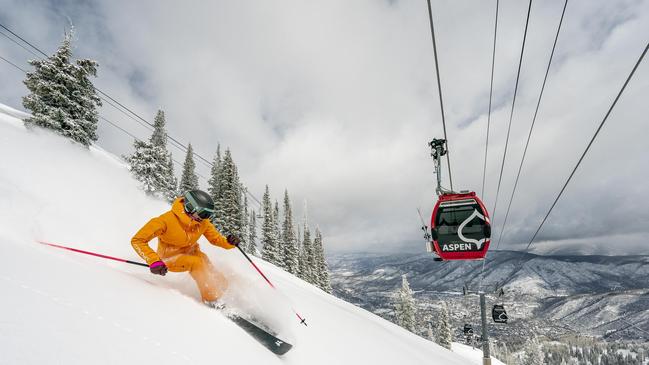
It’s a mid-winter’s morning in Aspen and a heavy blanket of cloud is draped over the famous Colorado ski resort. It could be read as a sign to stay in bed, but some of us have a higher calling. It takes the Silver Queen gondola 14 minutes to climb 1000m up Aspen Mountain to the 3418m summit – enough time for ski guide Jenn Gibbons to tell a story.
Back in the harsh winters of the late 1800s, when the mountain was mined for silver rather than powder, and before weatherproof, Bluetooth-equipped gondolas were invented, enterprising merchants would sell hot potatoes to prospectors, who’d use them as pocket hand-warmers, before eating them for lunch.
Aspen was born from silver (the gondola was named after the world’s largest nugget, an 830kg whopper prised from Smuggler’s Mine in 1894), but “modern Aspen” really grew up in the counterculture heydays of the 1970s, something Jenn was witness to as a young high school student.
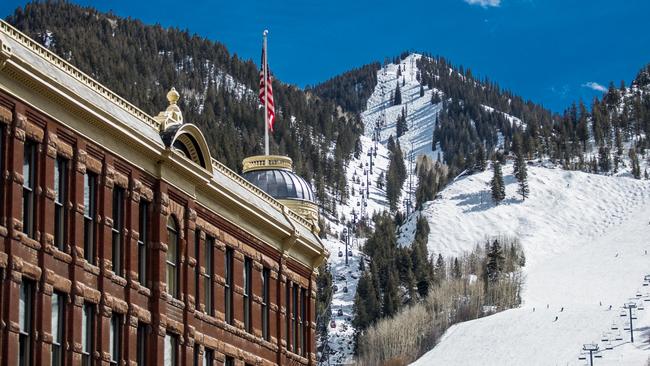
“Aspen was all about the ski bum lifestyle,” she says, as we break through the cloud into bright sunshine. “People migrated from California, so surf culture merged with ski culture. Everyone lived, worked and skied in town.”
The gondola doors open, we step out, and talk turns to the future. When this year’s ski season opened last month, the first skiers to alight this gondola christened 62ha of new terrain – a high-altitude, north-facing area called Hero’s.
Accessed by a high-speed quad chairlift, Aspen Mountain’s first major expansion in decades increases skiable terrain by 22 per cent, and is hoped to future-proof the resort from the effects of climate change, and extend the skiing season well into spring.
Aspen Snowmass ski resort spans four mountains: Aspen Mountain, Aspen Highlands, Buttermilk and Snowmass, all with vastly different personalities. Aspen Mountain is no place for beginners, but the gondola means anyone can sight-see to the summit.
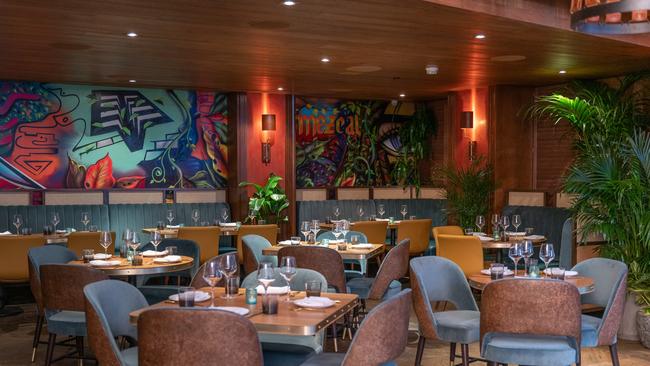
Our morning is spent picking our way down the steeps, before decamping to Sundeck Restaurant (in lieu of pop-up potato stands), where we stash skis, peel off layers and gaze across the valley to Highland Bowl, the legendary off-piste playground at Aspen Highlands.
Beginners and families flock to Buttermilk, but the mountain’s benign reputation can also be a bonanza for the brave, with powder stashes often lying undiscovered for days (especially in the black diamond gullies off the Tiehack Express chairlift).
Buttermilk is boasting a $US23m ($35m) makeover of its base area, streamlining ticketing, rentals and ski school into an electric-powered guest services building, and upgrading the ageing restaurant into Buttermilk Mountain Lodge, with a sunny, slope-side patio ideal for people-watching.
As you might have guessed, Aspen was anything but idle during the pandemic. While some resorts went into hibernation, Aspen went into hyperdrive. The real estate market exploded, as the well-heeled turned their backs on big cities to ride out the storm in this most jet-set of rural hideouts (when I visit, there’s a six-bedroom home on the market for $US21m, bought for $US8.6m in 2015).
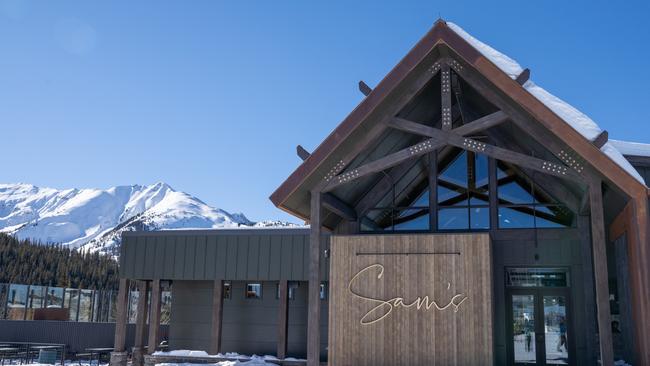
The squeezing-out of workers is a recurring topic in town, and the closure of the much-loved locals’ haunt Eric’s Bar is a particular sore point. Walking through town, I get a distinct sense of a ski town scrambling to recalibrate its equilibrium, balancing the onslaught of wealth with a longstanding commitment to humanism, art, intellectual fulfilment and unbridled fun, ideals that remoulded the town when the ski bums of the ’70s swept through – a way of life that won’t be relinquished without a fight.
Jenn says WinterSkol, the annual winter festival that began in 1951, encapsulates the town’s enduring community spirit. “It would start with a canine costume contest, then a parade through town with the local Gentleman of Aspen rugby team on the back of a flatbed truck wearing ski goggles and holding trashcan lids like superhero shields, to deflect a pummelling of snowballs coming from all directions.
You could see the snowstorm of white artillery coming from blocks away.” WinterSkol’s traditional torchlight parade sees skiers brandishing flares as they ski down Aspen Mountain under a volley of fireworks (“We strongly advise that participants wear clothing that can withstand burn marks from flares”) warns the website.
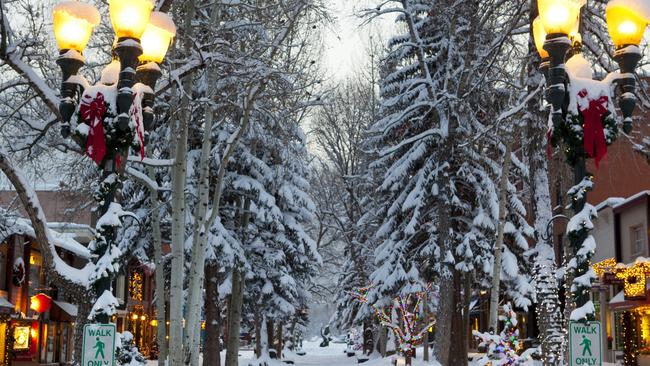
Other links to that golden era remain unbroken. Look out for costumed “ski gangs” tearing down the slopes: the Flying Monkeys dressed in Tarzan outfits, or The Freaks, named after Hunter S. Thompson’s 1970 campaign for sheriff of Pitkin County (he lost narrowly). Shrines to fallen friends, local dogs or celebrities are sprinkled among the spruce trees. Jenn skis us to the snowy shrine of Grateful Dead singer Jerry Garcia, where tree trunks are plastered with photos and psychedelic paintings, their branches strung with droll road signs like “Stoner Ave”. In an antipodean tribute, someone has contributed a can of VB.
An underlying commitment to egalitarianism also prevails, counterintuitive to the town’s exclusive reputation, including free daily “ambassador tours”, run by local ski guides, giving guests a crash course (hopefully not literally) in both the mountain and the history of the town. “There’s a magical community vibe here that will never go away,” says Jenn, “no matter who moves here”.
There’s magic, too, in strolling Aspen’s snowy streets, soaking up the grand Victorian architecture juxtaposed with modernist Bauhaus buildings, poking your head into art galleries that wouldn’t look out of place in Manhattan, and the line-up of luxury boutiques (Gucci, Dior, Prada, Louis Vuitton, you name it, they’re all there).
Designer dogs leave dainty paw prints in the snow, and families spill out of luxe Western wear shop Kemo Sabe in matching Stetson hats and sequined cowboy boots and head off to dinner.
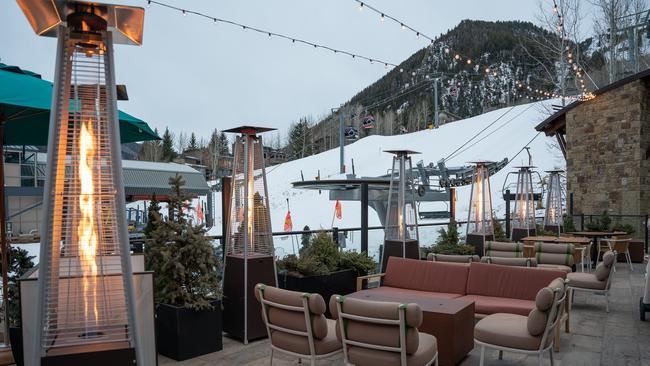
A post-pandemic restaurant renewal has refreshed the food scene. Tucked discretely behind conspiratorial black curtains, PARC is the place to be seen. Slide in to a sleek banquette or sidle up to the quartz-topped bar and enjoy locally sourced French farmhouse-style cuisine. Also making a credible upper case claim is CHICA, a Latin American restaurant at the base of Aspen Mountain.
Inside, the room is so low-lit we use our phones to read the menu, deciphering enough to order a shared plate of roasted meat parrillada, a mixed grill of skirt steak, Al Pastor pork ribs, lamb and chorizo. Bookmark the fire-lit, slope-side patio for apres ski festivities, and don’t skimp on the parmesan truffle fries.
There’s culinary movement slopeside, too. At Snowmass, a $US2.5m renovation has transformed a former steakhouse at the top of the Village Express chairlift into Sam’s, a modern Italian restaurant with a white marble bar, roaring fire and soaring, timber ceilings.
Swapping ski boots for slippers, we graze on antipasti platters while gazing over the Elk Mountains. Cured meats are cut on a flywheel slicer and the signature “grandma style” pizza is served with what appear to be topiary shears to cut our own slices.
Snowmass gifts us one of those ski days you never forget, the groomed slopes so sparse it’s like we have booked the entire place for a private session. The mountain is a whopper – bigger than the other three combined – and suited to every type of skier.
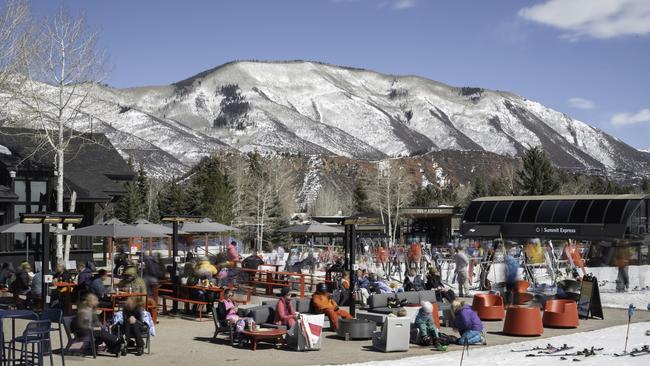
We carve carefree tracks through pristine corduroy, dip into glades of evergreens, and even make cautious forays into a slalom course.
The purpose-built village might lack the atmosphere of Aspen, but ski-in/ski-out accommodation, a world-class ski school and varied terrain make it a compelling option for families, or groups with skiers of different levels.
But if it’s the limelight you crave, Aspen will provide. I’m staying at the centrally located Limelight Hotel, which is spruiking a modern makeover courtesy of New York designers Stonehill Taylor.
A digital painting dances on a screen behind a pair of carved timber reception pods, adjacent to the stylish Limelight Lounge, with a herringbone-tile bar, copper pendant lights, custom chandeliers and flickering fireplace.
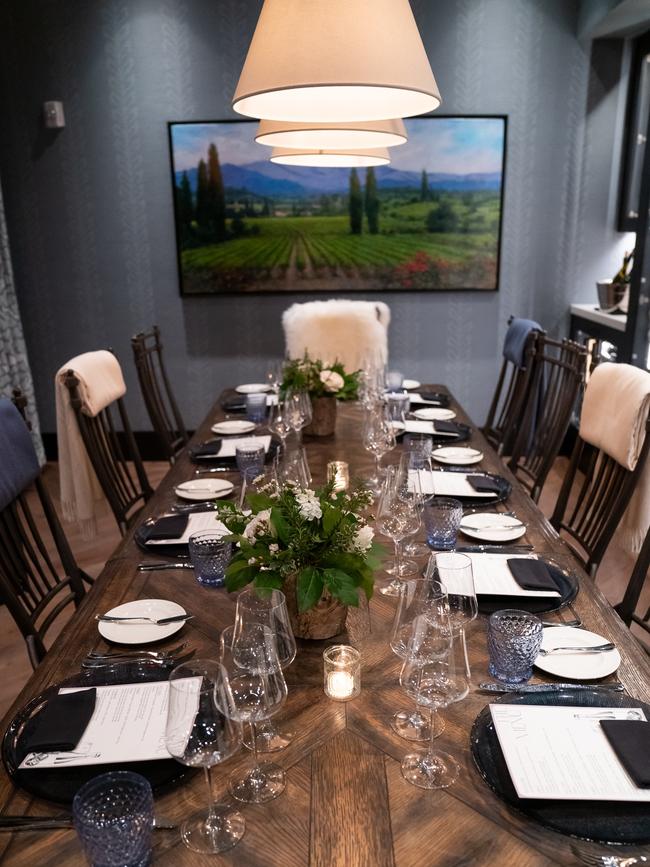
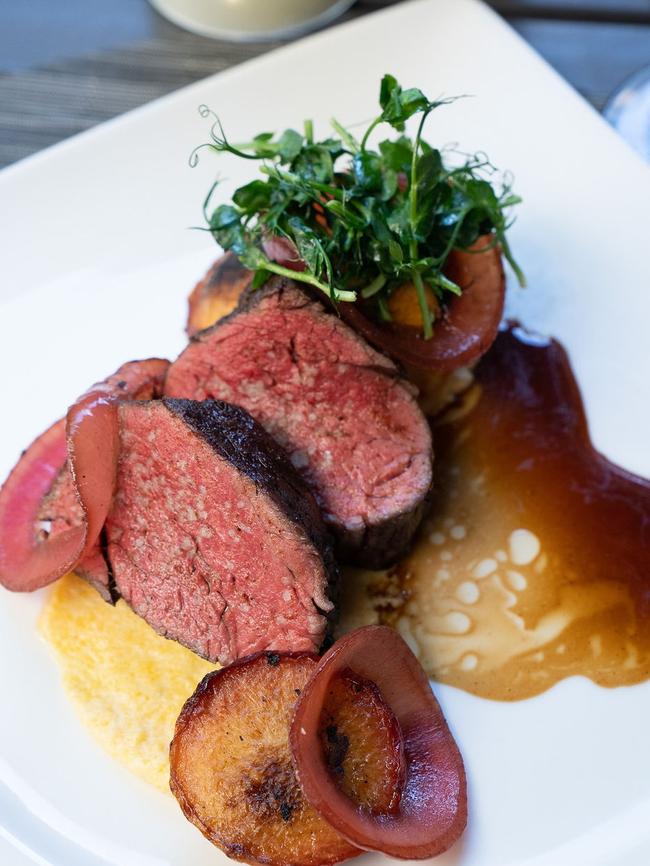
My grand deluxe room has ample closet space for bulky ski garb, a smart kitchenette, marble bathroom and a window view over the heated outdoor pool and spa to Aspen Mountain’s original base area, where fun-loving ski bums arrived all those years ago to work a season, and never left. Well, how could they?
In the know
Aspen Snowmass ski season runs from late November to April. Travelplan has a variety of Aspen Snowmass ski packages, including discounted accommodation, lift tickets and airfares.
Ricky French was a guest of Travelplan and Colorado Ski Country.

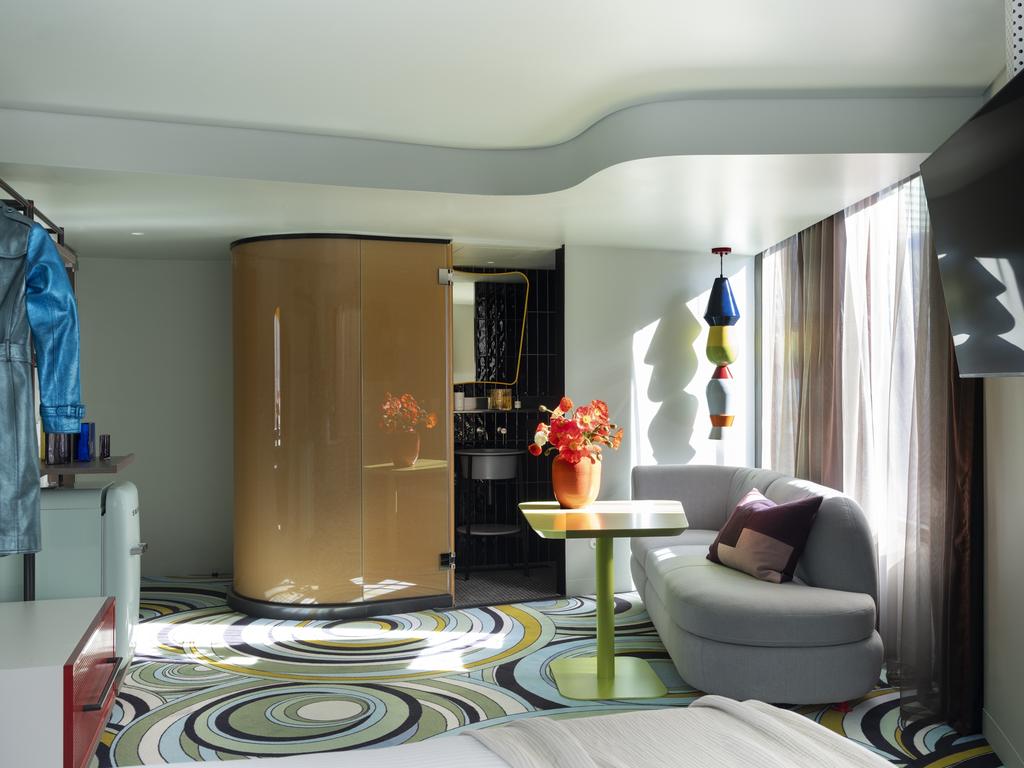
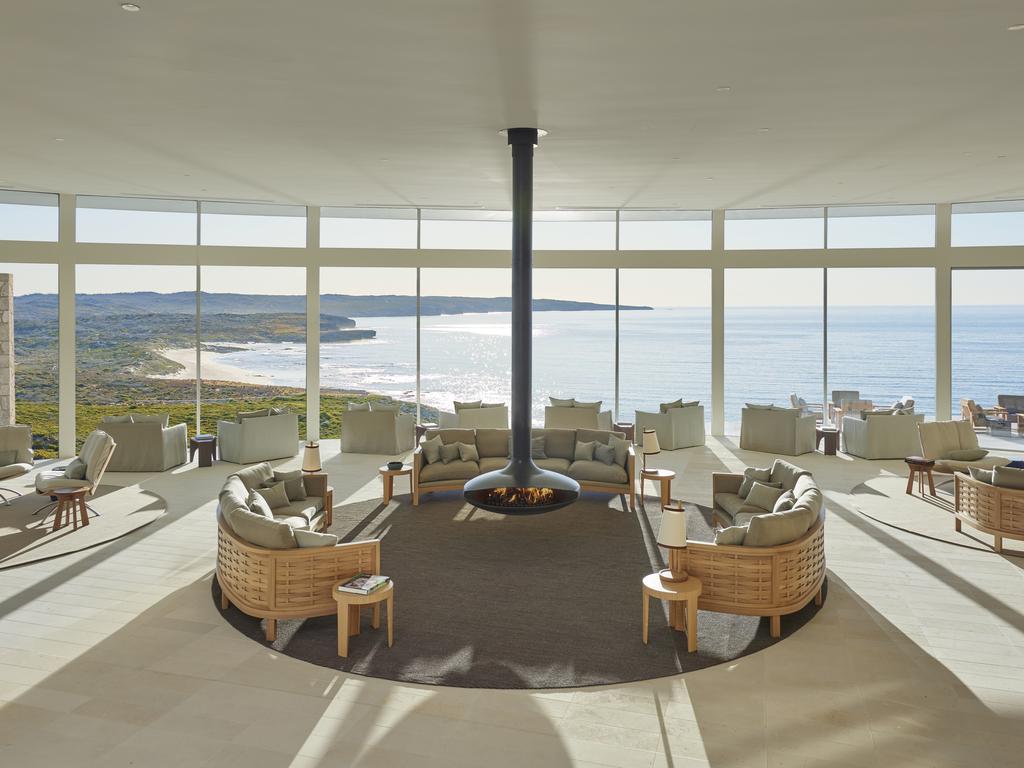
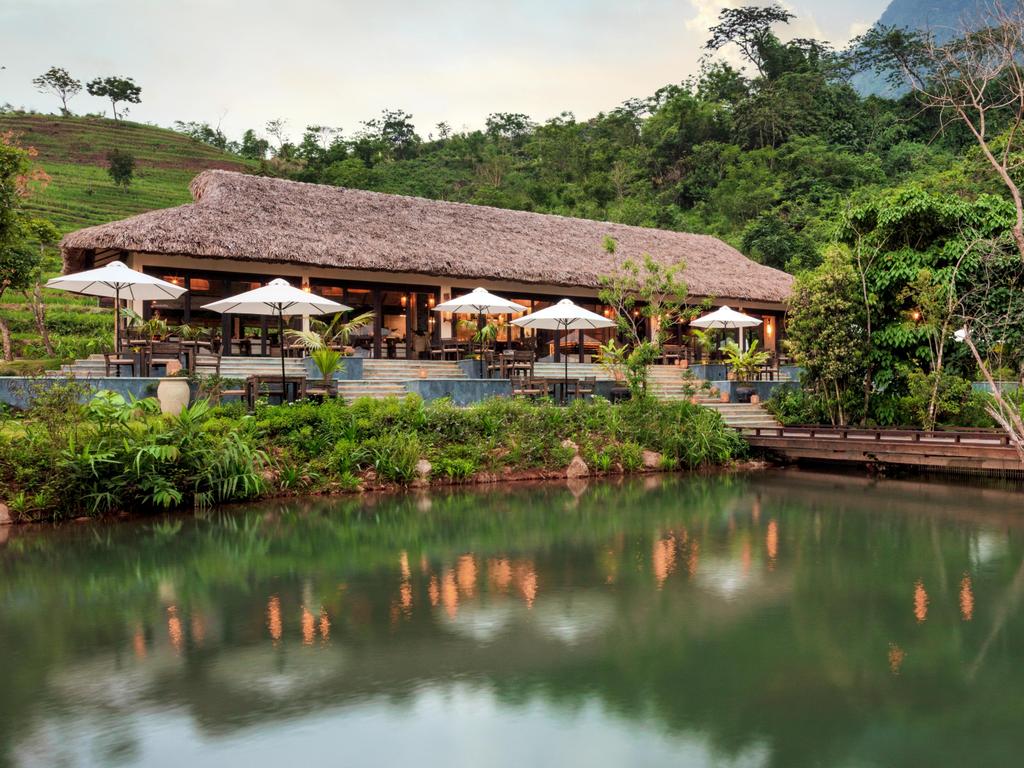
To join the conversation, please log in. Don't have an account? Register
Join the conversation, you are commenting as Logout